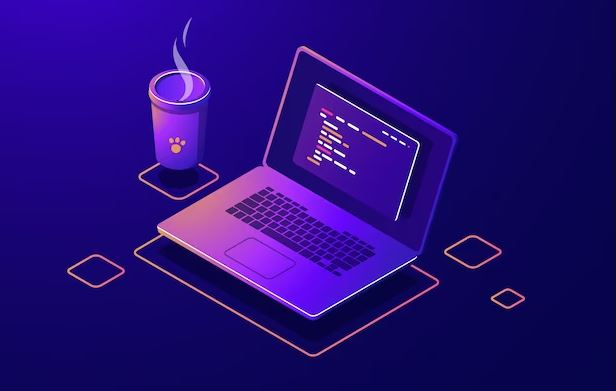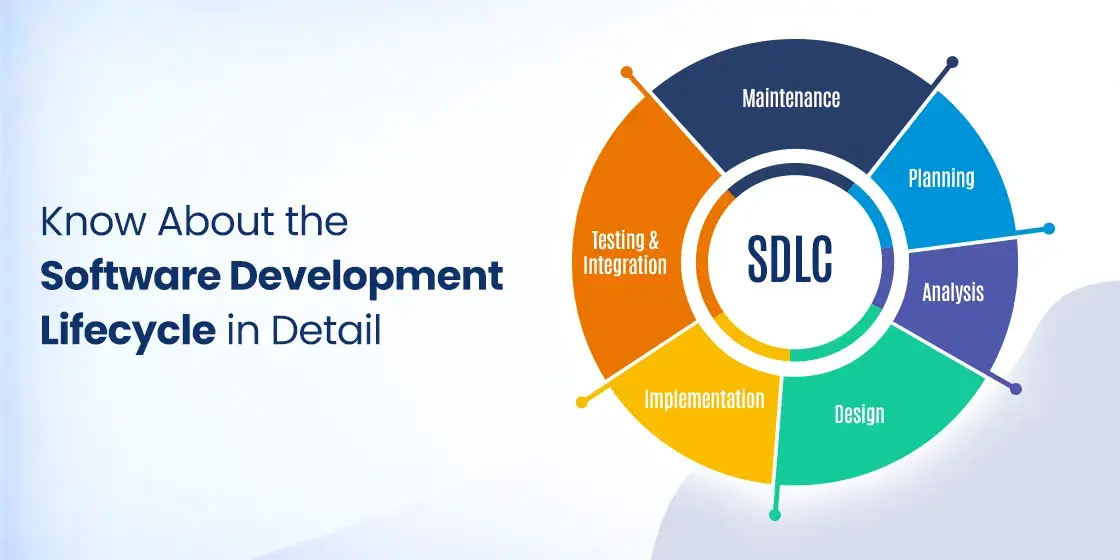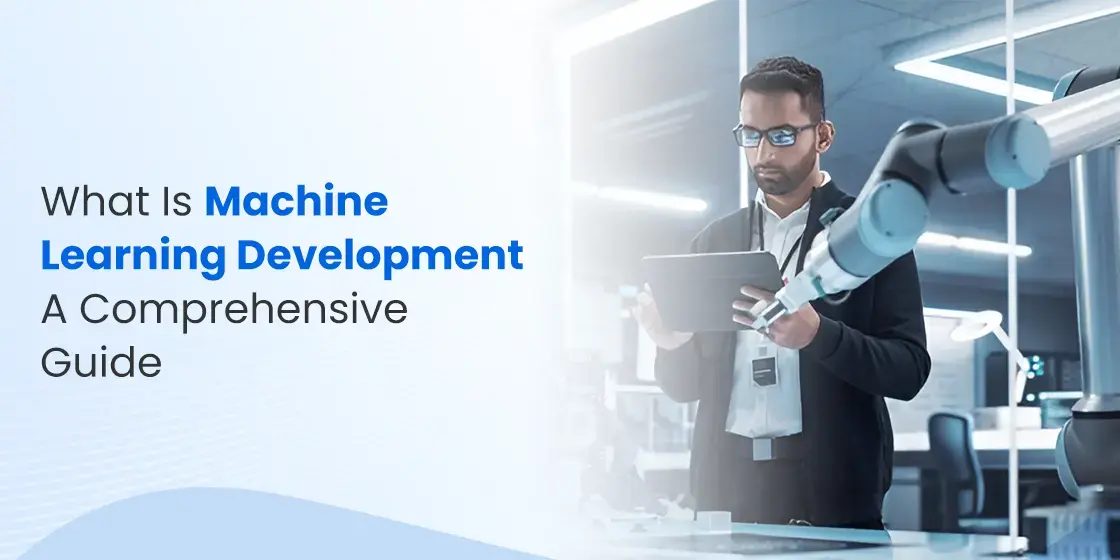Table Of Content
Learn How Software Development Life Cycle Works in Detail Below
To create a quality software product, you need to work with some set of rules. This practice is considered important for every developer because it helps them to move forward in an organized manner. In development methodology, this practice is called Software Development Life Cycle (SDLC). It refers to a complete pathway that includes different stages in a software development process. By following them, developers can move along in an organized manner, ensuring to get quality results at the end. This pathway is recommended best for all types of software applications, ranging from ERP systems to mobile apps and more.
The understanding of SDLC helps to clear out various confusions in mind. It offers a systematic way to understand things and make better decisions while developing a software solution. For beginners, it is quite important to understand SDLC before starting work on any project. If they will not get these necessary concepts, then they would always remain puzzled while developing any application. It can seriously disregard their thought process and can demotivate them after just getting a little failure at any development stage.
Therefore, to stay firm and focused all the time, it is important for software developers to understand the bases of SDLC. They need to know how the whole development life cycle works, starting from ideation to development and more. In this blog, we will cover this exact topic in detail, so that beginners can get a sound knowledge about the whole concept of software development life cycle.
Let us first start from the basics below understanding what is SDLC and why following an organized pathway like this is important in software development.
What is Software Development Life Cycle (SDLC)?

Software development life cycle refers to a complete process of development from start to finish. It defines the journey of a software application i.e. how it started and completed by going through several software development phases. Getting a solid knowledge about this whole process is very important for a software development company. It lets them know about the initial stages, mid-level development and finalization of the whole development process in a detailed manner.
As a developer, you can plan out the whole project development by properly planning tasks in the SDLC model. You can define different tasks one by one in each stage, as that gives you a better view how the whole project will proceed in different stages. This understanding allows you to organize everything in a timely manner, so that all the tasks can be completed efficiently within the given period.
For beginners, the understanding of SDLC is considered very important. It helps to build their concepts and view about software development right from the start. It lets them know about different development stages, required resources, deadlines and more others in a proper manner. All of this information comes in very handy for the developers in terms of prioritizing and executing tasks as per the given development plan.
Key Software Development Life Cycle Phases You Need to Know About
Every developer must need to know about the overall software development life cycle process. It provides valuable information about each phase, as how they work and what type of requirements are involved in them. This gives developers a crucial knowledge about different sub-processes that are required in those phases.
If you are a beginner who do not know much about different software development life cycle phases, take a look at the brief parts defined below. It illustrates the objective of every stage, as how does it work keeping in view the whole perspective of the life cycle.
Let’s take a look at them below.
Problem Identification

Many people think that brainstorming is the first phase in software development life cycle. Well, that is not entirely true because problem identification comes first before the lengthy ideation phase. In this stage, developers pay attention to the core problem identification of the given project. They try to analyze the problems that are being faced by the clients, as well as their possible reasons.
This identification often takes a long time if things are not clearly stated by the clients. It is therefore advised to first prepare a SOW report after consulting with the clients, as that helps to document some important things. It writes down various crucial requirements and problems of clients, allowing developers to understand what is being really needed in the product.
The identification of problem often leads to some clues related to required solutions. This generally happens when the problem is not that much complicated, or is relatively easy to understand. If it is not easy to understand, then things are proceeded to the brainstorming stage in which further discussion and dialogue helps developers to find out some valuable solutions.
Brainstorming & Ideation
After identifying the problem, the SDLC process then move to the brainstorming stage in which multiple things related to the project are taken into the account. This stage is generally a bit lengthy because it requires detailed thought process from the whole team. They need to extract solutions according to the problem which often takes some time. Though it also depends on the complexity of the problem, as critical questions generally require a good period of time to propose quality answers.
Sometimes, clients also describe the required solution to the development teams at the project discussion meetings. The primary aim to do that is to speed up the pace of the software design and development. It helps developers to know what is being required in the project and how much time it will take. Based on these points, they try to build a plan for the development taking clients or project stakeholders in confidence.
The brainstorming session also helps to clear out arguments and disagreements within the team. It is a phase in which everything is discussed in detail. All members are given the opportunity to share their ideas and then build a solution according to it. That is how a unanimous plan is created to handle project according to the best software development standards.
Design and Development

Once a plan has been built for development, the teams are allowed to start their work. They are best recommended to plan their tasks according to the software development life cycle documentation. This paper has got everything about the project and its development pathway. It becomes handy for the team in planning and allocating tasks to different members. Generally, tasks are given according to the expertise of team members. It makes sure that right profiles are chosen for the job considering all the skills and capabilities in check.
The development teams are also given the choice to select their preferred software development methodologies to complete the given tasks. From agile software development lifecycle to waterfall software development lifecycle, they can choose anything that fits best according to their requirements. Generally, project managers make this crucial decision, as they are seen as the core personality to plan and complete projects as per the given demands.
The development phase typically lasts long than any other phase because of having multiple tasks involved in it. However, the number of resources available for development can greatly vary the time period. If a team has multiple developers available, then obviously their workload will be divided, and the projects will be completed in a short time frame.
Software Testing
After completing the development, the next phase that is considered important in SDLC is the testing phase. It comprises of different tests aimed towards finding the errors hidden deep inside the code. Basically, it is quite normal to have some errors after completing the first programming cycle. Many little things often go unnoticed during the development, which is why testing is considered important at the end. It helps to find out errors and propose solutions timely, so that final software deployment can be done effortlessly.
Considering the mode of identification, the software quality assurance team conduct different types of test. From integration to functional testing, there are different options available to evaluate the executional status of the application. This process also requires good technical expertise, hence skilled QA professionals are always preferred for the job. They have got good idea about all types of software testing and documentation required in this stage. Using their experience, they conduct different tests briefly so that every component and feature of the application can become error free.
Key Software Development Life Cycle Models
Being a developer, you should know about different types of SDLC models. It helps you to choose the best software development process that fits perfect for your project development. If you are a beginner having no knowledge about them, take a look at the different models defined below.
Agile Software Development Lifecycle
Agile methodology is widely preferred as the best method for software development. It is quite different from the other methods because agile allows you to adapt flexible approach for project development. It breaks the cycle into separate phases and developers are given an ample period of time to complete them according to emerging priorities. The product is developed with a succession of releases, as that helps to continuously resolve the errors and develop applications properly at a smooth pace.
Waterfall Software Development Lifecycle
Waterfall is a typical SDLC model that advises developers to work on different phases one by one. It follows the sequential path, meaning that teams can work on one stage at a time. The main objective of this practice is to keep focus on one thing, so that better results can be achieved at the end. The flip side of this model is that it is not much flexible and scalable like agile methodology, which is often referred as the major drawback of this model.
Spiral Model
As the name suggests, spiral model emphasizes on performing tasks repetitively. It is that sort of model in which phases run in loops until a final product with zero errors is precisely developed. It could be seen as an extension of waterfall model with a slight addition of looping iterations. Due to offering quality output, this model is used by many developments teams that are always looking to develop applications with zero errors.
Frequently Asked Questions (FAQs)
| 1. What is the software development lifecycle? Software development life cycle refers to a process that covers the whole journey of software development from start to finish. It is termed very important as every developer must know about all the stages of software development. |
| 2. What are the steps included in software development lifecycle? Software development lifecycle includes different steps and every developer should know about them. From problem identification to brainstorming and development to deployment, there are various steps that define the efficacy of overall SDLC model. |
| 3. What are the benefits of using the software development lifecycle? By having a proper understanding of SDLC, you can plan the development of projects properly. It helps you to organize everything, allowing developers to understand the roles and objectives of every stage precisely. |
| 4. How does the software development life cycle help with project management? The understanding of SDLC plays a major role in project management. It lets the development teams know about the required work, as well as the timeline needed to complete the project. |
| 5. What techniques can be used to ensure the success of a software development project? To build a quality software project, you need to first conduct a brief research of the market. Furthermore, you also need to select right tools and technologies to build advanced products as per the given requirements. |
| 6. What challenges can teams face when using the software development lifecycle? There are different types of challenges a team can face during the software development lifecycle. It includes shortage of internal resources, unspecified deadline, unrealistic objectives and more others. |
| 7. What are the best practices for software development lifecycle management? Software development lifecycle helps to build quality applications, only if it is followed smartly. As a developer, you can use several practices to ensure efficient product development from SDLC, including proper brainstorming, requirements gathering, methodical development and more others. |
| 8. How can software development lifecycle be used to improve code quality? With the help of SDLC, code quality can be improved smartly. The reason is that many SDLC models insist on iterative coding if some errors are found during the tests. That is how code quality can be improved properly using right SDLC models. |
| 9. What tools are available to help teams manage the software development lifecycle? There are different types of software development life cycle tools available in the market. You can choose anyone of them according to your requirements. This includes Jira, Tricentis Tosca, SonarQube and more others. |
Other Insightful Reading:
Final Words
That brings us to the end of this blog in which we have discussed about software development life cycle in detail. This is certainly a very important topic that defines the method and pathway of developing an application. Beginners should specifically know about all the SDLC models, as they come in handy in different types of development scenarios. In this blog, we have defined all the phases that are included in any SDLC model, allowing developers to understand their objectives and goals precisely.
If you are looking for a software agency that can build quality applications according to key SDLC models, get in touch with us today. We have got years of experience in the software development, and are teams are well skilled in developing all types of applications as per the given demands.
Empower your digital initiatives with BariTechSol, a premier custom software development company. Our skilled team tailors cutting-edge solutions to your unique needs. Elevate your tech experience and stay ahead in the digital realm. Partner with BaritechSol and code the success of your next big idea.


